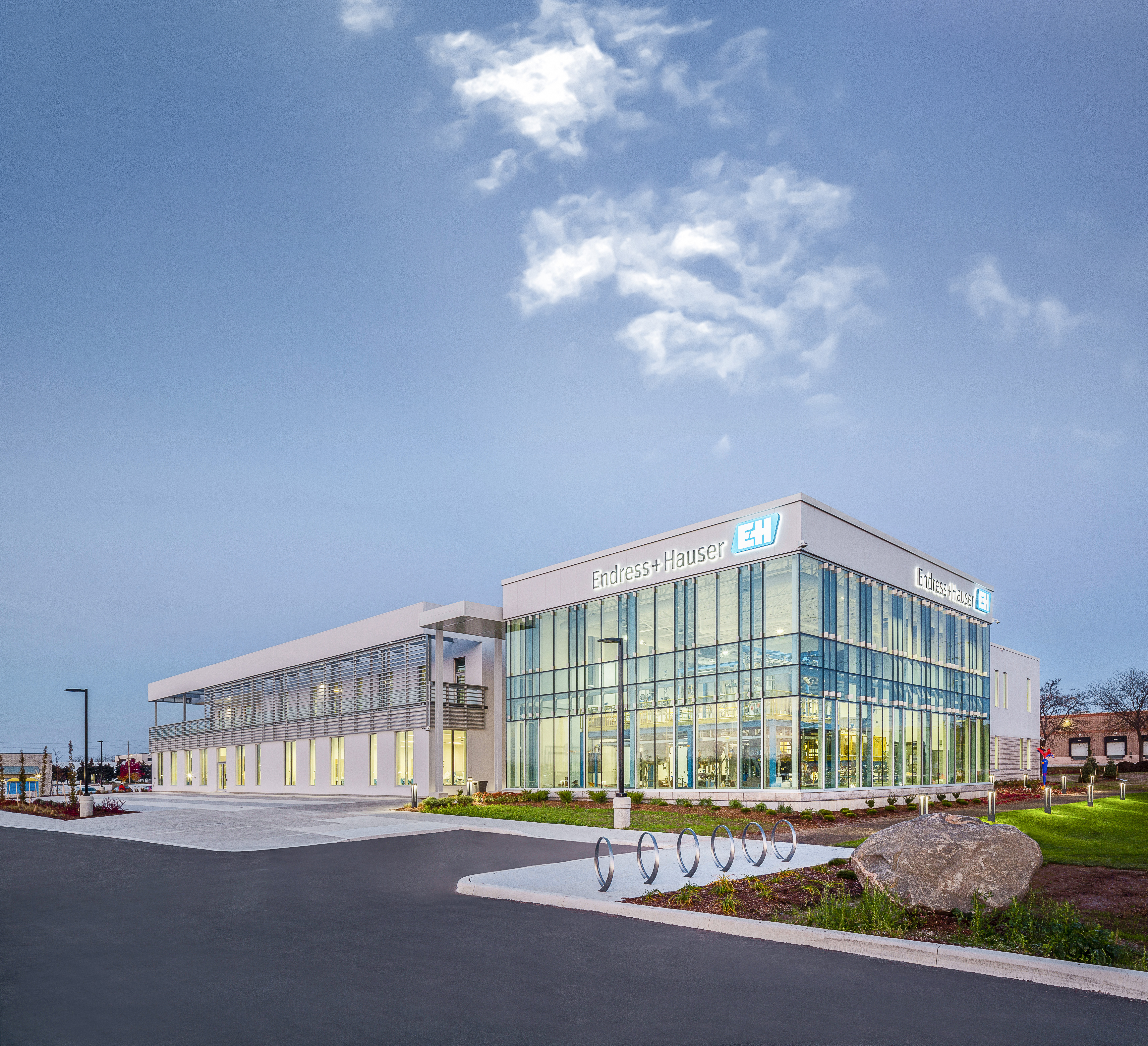Solar power, thermal heat
Endress+Hauser Canada involved employees in the planning of its new Customer Experience Center in Burlington, Ontario. The result is a wealth of good ideas for one of the greenest buildings in the country, which generates more renewable energy than it consumes – and more than compensates for the small indulgence of a traditional barbecue.

Snow-covered pine forests and sweeping winter landscapes. When talk turns to Canada, many people think of the cold season. But in truth, this is a land of extremes. Winter temperatures in the densely populated regions of southern Canada on the Great Lakes can drop to minus 30 degrees Celsius or lower. But in summer, these same areas experience a humid climate, with occasional hot spells when temperatures may rise as high as 35 degrees Celsius.
That’s why many buildings in Canada need both heating and cooling. While electric air-conditioning systems keep things cool, heat still comes primarily from fossil-based natural gas. All the same, hydroelectric power is traditionally a major component of Canada’s energy mix: the second largest country on earth in terms of land area already sources two-thirds of its electricity needs from renewables.
“A desire to invest in green technologies quickly became clear from discussions with employees and management about our new Customer Experience Center in Burlington, The result was that we became a pioneer in Canada.”
Anthony Varga
Managing Director of Endress+Hauser Canada
THREE CERTIFICATIONS AT ONCE
In late 2018, sustainable energy was a hot topic at Endress+Hauser’s Canadian sales center. “A desire to invest in green technologies quickly became clear from discussions with employees and management about our new Customer Experience Center in Burlington,” says Anthony Varga, Managing Director of Endress+Hauser Canada. “The result was that we became a pioneer in Canada.” That’s because Endress+Hauser is the first private company to strive for all three certifications bestowed by the Canada Green Building Council: Net Zero Energy, Zero Carbon Building Standards, and gold-level Leadership in Energy and Environmental Design (LEED).
After the go-ahead, Project Manager Eliza Vrbanac and her team developed a total operating concept for the office building, which also serves as a Customer Experience Center. The ground floor houses a process training unit (PTU) that includes a pilot system where customers can test Endress+Hauser applications under wide-ranging process conditions, a calibration lab, a repair shop and a training center. The floor above provides flexible workspaces for up to 120 employees. “We also installed south-facing windows in order to let abundant sunlight into the building,” says Eliza Vrbanac. “And as a further example, the atrium has a four-meter-high fig tree that improves air quality in its own natural way.”

Endress+Hauser Project Manager Eliza Vrbanac: “We can even feed power back into the grid.”

Customers can test measurement technology under a wide range of conditions in the Customer Service Center.

A broad set of windows lets as much sunlight into the building as possible.
775 SOLAR PANELS AND 24 DEEP BOREHOLES
At the heart of the concept are two components: a solar energy system on the roof and a geothermal heat pump system that it powers. The 775 solar panels can produce a theoretical 408,000 kilowatthours per year. “Compare that number to our average annual consumption of roughly 350,000 kilowatt-hours. Generating capacity exceeds inhouse demand, which means we can even feed power back into the grid,” the project manager calculates.
The geothermal system draws heat from 24 boreholes under the employee parking lot that go down to a depth of 180 meters. “We laid nearly 9 kilometers of pipes for the geothermal system,” explains Eliza Vrbanac. “180 meters down, the year-round temperature at our location is a constant 12 degrees Celsius. This gets absorbed by a glycol-water mix that circulates through the underground geothermal loops and back into the building, where it feeds the heat pumps and only has to be warmed by about 10 degrees.” Best of all, the 130 heat pumps send warm air at 20 degrees directly into various areas of the building. So they act as an all-in-one heating and air-conditioning system, depending on outdoor temperature.
NATURAL GAS IS RESERVED FOR THE BARBECUE
“All of the features were based on an employee survey,” emphasizes Anthony Varga. “We were able to fulfill a considerable number of wishes, from an exercise room, shower and changing rooms, to a multifaith prayer room.” The most important leisure amenity, though, is the gas grill on the roof patio. “Barbecuing is a big thing in Canada,” explains the managing director, tongue in cheek. “So we are still connected to natural gas – although it only gets used for firing up the grill.”
Published 09.09.2022, last updated 25.10.2022.
Dive into the world of the process industry through new exciting stories every month with our «changes» newsletter!









